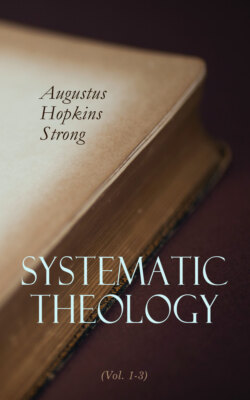Читать книгу Systematic Theology (Vol. 1-3) - Augustus Hopkins Strong - Страница 66
На сайте Литреса книга снята с продажи.
1. As to documentary evidence.
Оглавление(a) Documents apparently ancient, not bearing upon their face the marks of forgery, and found in proper custody, are presumed to be genuine until sufficient evidence is brought to the contrary. The New Testament documents, since they are found in the custody of the church, their natural and legitimate depository, must by this rule be presumed to be genuine.
The Christian documents were not found, like the Book of Mormon, in a cave, or in the custody of angels. Martineau, Seat of Authority, 322—“The Mormon prophet, who cannot tell God from devil close at hand, is well up with the history of both worlds, and commissioned to get ready the second promised land.” Washington Gladden, Who wrote the Bible?—“An angel appeared to Smith and told him where he would find this book; he went to the spot designated and found in a stone box a volume six inches thick, composed of thin gold plates, eight inches by seven, held together by three gold rings; these plates were covered with writing, in the ‘Reformed Egyptian tongue’; with this book were the ‘Urim and Thummim’, a pair of supernatural spectacles, by means of which he was able to read and translate this ‘Reformed Egyptian’language.” Sagebeer, The Bible in Court, 113—“If the ledger of a business firm has always been received and regarded as a ledger, its value is not at all impeached if it is impossible to tell which particular clerk kept this ledger. … The epistle to the Hebrews would be no less valuable as evidence, if shown not to have been written by Paul.” See Starkie on Evidence, 480 sq.; Chalmers, Christian Revelation, in Works, 3:147–171.
(b) Copies of ancient documents, made by those most interested in their faithfulness, are presumed to correspond with the originals, even although those originals no longer exist. Since it was the church's interest to have faithful copies, the burden of proof rests upon the objector to the Christian documents.
Upon the evidence of a copy of its own records, the originals having been lost, the House of Lords decided a claim to the peerage; see Starkie on Evidence, 51. There is no manuscript of Sophocles earlier than the tenth century, while at least two manuscripts of the N. T. go back to the fourth century. Frederick George Kenyon, Handbook to Textual Criticism of N. T.: “We owe our knowledge of most of the great works of Greek and Latin literature—Æschylus, Sophocles, Thucydides, Horace, Lucretius, Tacitus, and many more—to manuscripts written from 900 to 1500 years after their authors' deaths; while of the N. T. we have two excellent and approximately complete copies at an interval of only 250 years. Again, of the classical writers we have as a rule only a few score of copies (often less), of which one or two stand out as decisively superior to all the rest; but of the N. T. we have more than 3000 copies (besides a very large number of versions), and many of these have distinct and independent value.” The mother of Tischendorf named him Lobgott, because her fear that her babe would be born blind had not come true. No man ever had keener sight than he. He spent his life in deciphering old manuscripts which other eyes could not read. The Sinaitic manuscript which he discovered takes us back within three centuries of the time of the apostles.
(c) In determining matters of fact, after the lapse of considerable time, documentary evidence is to be allowed greater weight than oral testimony. Neither memory nor tradition can long be trusted to give absolutely correct accounts of particular facts. The New Testament documents, therefore, are of greater weight in evidence than tradition would be, even if only thirty years had elapsed since the death of the actors in the scenes they relate.
See Starkie on Evidence, 51, 730. The Roman Catholic Church, in its legends of the saints, shows how quickly mere tradition can become corrupt. Abraham Lincoln was assassinated in 1865, yet sermons preached to-day on the anniversary of his birth make him out to be Unitarian, Universalist, or Orthodox, according as the preacher himself believes.
